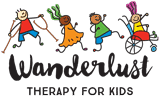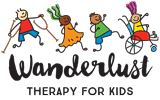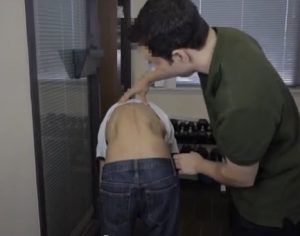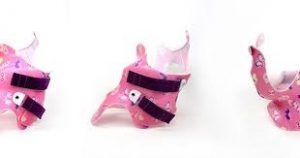I am passionate about scoliosis in children and had the amazing opportunity to work with the spinal team at the Evelina Hospital in London. They are a fantastic team and I learnt so much. I worked alongside paediatric spinal consultants in a busy clinic assessing and reviewing children with scoliosis. I have decided to write two blogs to raise awareness.
What are the main types of scoliosis?
The spine can curve towards either side of the body:
- A curve in the chest area is known as a thoracic scoliosis
- A curve in the lower part of the back is a lumbar scoliosis
- A curve between the thoracic and lumbar spine is a thoracolumbar scoliosis.
There are four main categories of scoliosis:
- Idiopathic Scoliosis
- Congenital Scoliosis
- Neuromuscular Scoliosis
- Syndromic Scoliosis
What is a Kyphosis and Lordosis?
A kyphosis is defined by an excessive outward curve of the spine and may cause a deformity such as a humpback or hunchback.
A lordosis is defined as an excessive inward curve of the spine in which the back may appear swayback, the buttocks more prominent.
In this blog I shall focus on neuromuscular and syndromic scoliosis (NMS).
What is a Syndromic Scoliosis?
Syndromic scoliosis is a symptom of skeletal disorders that cause dysplasia (formation of abnormal tissue), or malformed bones and cartilage. These conditions include achondroplasia and neurofibramtosis.
What is a Neuromuscular Scoliosis?
Neuromuscular scoliosis (NMS) is a type of scoliosis that can occur in children who have medical conditions that impair their ability to control the muscles that support the spine. A few of the more common conditions associated with NMS include muscular dystrophy, cerebral palsy, and spina bifida.
What type of curves do you see most often in children with neuromuscular and syndromic scoliosis?
There are lots of different types of curves but in MNS we often see long ‘C’ shaped curves. This is because the whole spine can be affected. This type of curve can cause your child to lean to one side. Sometimes this type of curve can cause the pelvis to also pull upwards.
How do we treat Scoliosis?
The choice of treatment depends on the following:
- child’s age and skeletal maturity – growth ↑scoliosis
- severity of the curve
- flexibility of the curve
How do you measure the severity of the scoliosis?
We take an X ray of your child standing from the front and the back. If they are unable to stand, we take the x ray with your child sitting. We then take a measurement called a cobb angle.
- Minor degrees of scoliosis (<25 degrees) need monitoring – Treatment is normally supportive seating / postural management and advice regarding positioning in all upright postures against gravity.
- Moderate degrees of scoliosis (25 – 40 degrees) – Treatment is normally Bracing depending on age/ skeletal maturity / flexibility of the curve.
- Severe degrees of scoliosis will ultimately require surgery.
How do I know if my child has an emerging scoliosis?
Your physiotherapist and or doctor should discuss with you and your child how they will monitor for early signs of an emerging NMS if your child is at risk of developing one. Your child’s physiotherapist should monitor EARLY as your child grows with regular clinical examinations.
Regular clinical observations to include the following:
- Observation of skin creases
- Adams test assessment as seen in the picture above
- Observations for rib hump – back and front
- Pelvis alignment in sitting / posture in sitting – is your child LEANING OVER?
- Pain
- Loss of sitting balance
Your physiotherapist may request a referral to a spinal consultant who will also monitor your child’s spine as they grow with regular clinical assessments and X rays.
Your physiotherapist can also show you how to monitor your child for signs of a scoliosis.
What is spinal bracing?
This is an example of a spinal brace or jacket which can slow down the progression of a scoliosis. Children often wear these over a thin vest under their clothes
If you child’s spinal consultant recommends a spinal brace, it is important to do the following with the support of your physiotherapist and advice of your doctor:
- Ensure the brace is worn in all upright postures (for example when your child is sitting, standing etc).
- Ensure you are aware of how to tell when the brace gets too small – your physiotherapist can show you how to do this.
- The Brace can be removed for therapy /bathing / swimming etc. It can also help some children in physiotherapy to improve function and improve head control.
- Ensure your child gradually builds up the time spent in any new brace.
- A one piece brace provides better control, but is harder to put on than a two piece brace. Your physiotherapist can show you how to put the brace on and off.
Why be concerned about scoliosis?
- As the curve gets bigger, which normally happens with growth, it can change the way your child stands, sits, or walks.
- If you child uses a wheelchair the curve can change the pressure points underneath your child when they are sitting. This can lead to skin problems and the need for lots of modifications to your child’s wheelchair to help your child sit with optimal support.
- The NMS can cause back pain due to structural change.
- Severe curves can lead to diminished lung capacity and feeding / reflux issues.
Contact us for an informal chat to ask any questions specific to your child. We have children’s physiotherapists who are specialists working with children with Neuromuscular Scoliosis within Surrey, Sussex, Kent, Hampshire and parts of London. https://wanderlusttherapyforkids.com/contact/




